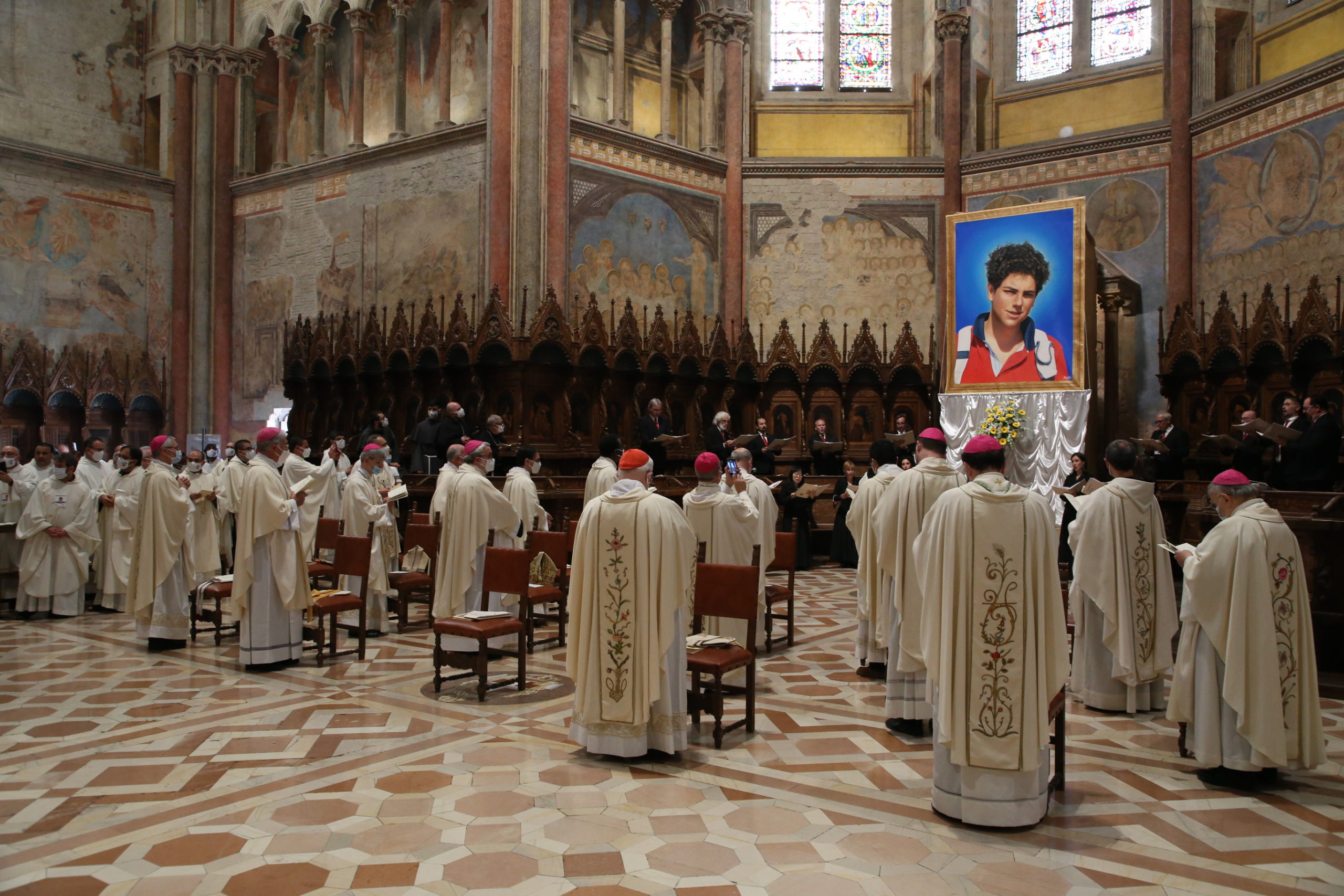By ZENIT Staff
Copyright zenit

Edward McNamara, LC
(ZENIT News / Rome, 09.15.2025).- Answered by Legionary of Christ Father Edward McNamara, professor of liturgy and sacramental theology at the Pontifical Regina Apostolorum university.
Q: We have a religious house confided to our congregation which has been a house of martyrs who were beatified in 2013. At least in that house, their memorial day has been celebrated as a solemnity (with Gloria, Creed, etc., first vespers taken from the Common). I have expressed doubts about it since they are not yet canonized, and it usually has to be approved by the Holy See. I was told, however, that the reason was they have special connection to the house and are declared one of our patrons by the previous general superior. — J.S., Tunis, Tunisia
A: Our reader is correct as to his doubts regarding the proper way to celebrate someone who is beatified. There is a document on the Vatican website from 1999 which deals expressly with this topic. Unfortunately for most inquirers, it is found only in Latin. There is however, a working translation found at a website of the dicastery itself:
“NOTIFICATION CONCERNING THE CULT OF THE BLESSED (Notitiae 35 [1999] 444-446):
“1. Those Servants of God are legitimately called Blessed who have been solemnly declared with this name by the Roman Pontiff in the rite of beatification or those whose cultus from immemorial custom has been confirmed by the Apostolic See.
“2. The liturgical cultus of the Blessed is only granted in the places and in the manners established by law.
“3. It is the responsibility of the Diocesan Bishop to request for his diocese that a Blessed, who has a special link with the same diocese — for example, by birth, by a prolonged stay, by apostolic activity, by death or by burial — be entered in the Particular Calendar.
“4. It is also the responsibility of the Superior General of a religious institute to request that a Blessed, who is a member of that religious family or has a special relationship with it, be entered in the Particular Calendar of the Institute.
“5. The celebration of the Blessed is assigned to the dies natalis. If, however, the dies natalis is impeded by another obligatory celebration in the General or Particular Calendar, even of a lower rank, it is assigned to the nearest day, provided it is not impeded, or to a day which is otherwise appropriate to the same Blessed — for example, the day of priestly
Ordination or Religious Profession or the translation of the remains.
“6. The celebration of a Blessed legitimately inscribed in the Particular Calendar of a diocese, a religious family or a larger territory is held with the rank of optional memorial, and with the rank of obligatory memorial in the Church where their remains are preserved; in the calendar of a religious Institute, the rank of feast is usually reserved for the Blessed who is the founder of that Institute.
“7. In order not to overburden the calendar of the entire diocese or Institute, care should be taken to inscribe with a proper celebration only those Blesseds who are of particular importance for the entire diocese or religious family; others are to be celebrated only in those places where they have the closest relationship or where their remains are preserved. This norm is all the more valid for a region or nation.
“8. The liturgical texts for the celebration of the Blessed can be taken from the respective Common of both the Roman Missal and the Liturgy of the Hours. The Collect, being closely linked to the Blessed themselves, is proper. In the Office of Readings, the second reading with the responsory can be taken either from the writings of the Blessed themselves or from a contemporary account, otherwise it is taken from the writings of the Fathers or ecclesiastical writers. The reading is to be preceded by a brief hagiographical note, which, however, is not to be read during the celebration of the Liturgy of the Hours. These texts must be submitted to the Congregation for Divine Worship and the Discipline of the Sacraments by the competent authority before beatification and cannot be modified without the consent of the Apostolic See.
“9. In order for a Blessed to be chosen as Titular of a church, a prior indult of the Apostolic See is required, unless his/her memorial has already been added to the Particular Calendar. In such a case, an indult is not required and the veneration of the Blessed in the church of which he/she is Titular is celebrated with the rank of feast.
“10. According to the norms established by the Congregation for Divine Worship and the Discipline of the Sacraments, a Blessed can be chosen as the patron of a place or an association, but this choice must be confirmed by the Apostolic See.
“11. Where the cultus is granted, the remains or relics of a Blessed may be displayed for public veneration by the faithful, and images of the Blessed may be adorned with a halo.
“12. The right to hold liturgical celebrations in honour of the new Blessed within a year of the beatification itself, according to the ‘Norms concerning celebrations that are customary for a certain period after beatification,’ is requested along with the approval of the liturgical texts of the new Blessed prior to the beatification.
“13. The names of the Blessed, which appear in the Calendar of the diocese or religious institute, may be mentioned in Eucharistic Prayer III (Ordo Missae, n. 114 [must be corrected in 113]) and added to the Litany of the Saints.
“14. With regard to the Blesseds who are not included in the Roman Martyrology nor enjoy a public cultus decreed or confirmed by the Apostolic See, the decree of the Sacred Congregation of Rites of 28 April 1914 applies, according to which, if in particular places by immemorial custom certain Blesseds are honoured with a public and religious cultus, it is licit to preserve them in the Particular Calendar by placing an asterisk or other sign next to their name; this notation, therefore, indicates the lack of an explicit decree by which they are formally declared Blessed.
“The Vatican, 21 May 1999
Jorge A. Card. Medina Estévez, Prefect
Mario Marini, Undersecretary”
In the light of the above, especially No. 6, these blesseds may not be celebrated as a feast and even less as a solemnity.
In accordance with No. 9 above, the current general superior could solicit the indult so that the church attached to the house be dedicated to them and, if granted, the celebration could be celebrated as a feast in the church.
On the other hand, if the Holy See has already granted permission for the blessed to be included in the calendar of the congregation in accordance with No. 4, then the general superior could dedicate the chapel to the blessed. This is obviously supposing that the church has not already been dedicated to some other saint, since changing a dedication requires permission from the Holy See.
That said, there is a distinction between receiving permission to class the celebration of a blessed as a solemnity or feast, and the actual solemnity with which the celebration takes place. In the latter case the community has greater freedom of action.
Even if the blessed is classed as an optional memorial, there is nothing that impedes using elements of solemnity in the celebration. Thus, the community could sing the Divine Office of the common and use incense. There are no first vespers and the Te Deum, which is proper to liturgical feasts, is not included in the Office of Readings.
The Mass could also be solemnly sung with the use of incense, candles, the Book of the Gospels and exercising all ministries. Outside of Lent the Gloria could also be added as this is an element that may be used even outside of feasts for special reasons.
The number of readings must remain at two, and the creed would not be included as these elements are proper to solemnities.
Readers may send questions to zenit.liturgy@gmail.com. Please put the word «Liturgy» in the subject field. The text should include your initials, your city and your state, province or country. Father McNamara can only answer a small selection of the great number of questions that arrive.
Thank you for reading our content. If you would like to receive ZENIT’s daily e-mail news, you can subscribe for free through this link.



